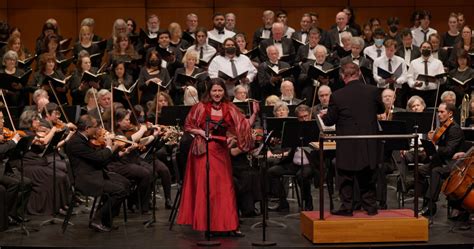The world of vocal classifications can be a fascinating one, especially when delving into the realms of the soprano and mezzo-soprano voices. These two vocal categories are perhaps the most recognizable and sought-after in classical music, opera, and musical theater, each with its unique characteristics, challenges, and requirements.
At the heart of understanding these vocal types lies the recognition of their distinct ranges and the specific qualities of sound they produce. The soprano voice is generally known for its brightness, clarity, and ability to reach high pitches with ease and power. Sopranos typically possess a vocal range that spans from middle C (C4) to high C (C6), though this can vary. The sound produced by a soprano is often described as piercing, bright, and capable of cutting through orchestral accompaniment with clarity.
On the other hand, the mezzo-soprano voice is characterized by its warmth, richness, and versatility. Mezzo-sopranos have a range that typically falls between the soprano and the alto, extending from A3 to A5. This unique positioning allows mezzo-sopranos to explore a wide range of emotional depths and dramatic roles. The sound of a mezzo-soprano is often described as full, rounded, and warmly textured, capable of conveying deep longing, passion, and complexity.
One of the most interesting aspects of these vocal classifications is the array of subcategories within them, reflecting the immense diversity of human vocal ability. For instance, within the soprano category, one might encounter the coloratura soprano, known for agility and precision in fast, intricate passages; the lyric soprano, whose voice is marked by beauty and expressive power; and the dramatic soprano, capable of producing large, powerful sounds suitable for the most demanding roles.
Similarly, mezzo-sopranos can be classified into subcategories such as the coloratura mezzo-soprano, who combines the agility of a coloratura soprano with the deeper, richer qualities of a mezzo-soprano; the lyric mezzo-soprano, characterized by a smooth, even voice; and the dramatic mezzo-soprano, whose powerful voice is suited to intense, dramatic roles.
The distinction between soprano and mezzo-soprano is not merely a matter of vocal range; it also encompasses the timbre, or “color,” of the voice, as well as the singer’s overall vocal technique and artistic expression. Many singers will find their voices naturally incline towards one category or the other, but some may possess voices that could be developed in either direction, depending on training and personal preference.
In opera and musical theater, the roles written for sopranos and mezzo-sopranos are often tailored to the specific vocal and dramatic demands of these voice types. For example, the soprano might take on roles that require great vocal brilliance and agility, such as Mozart’s “The Queen of the Night” in “The Magic Flute,” while a mezzo-soprano might be perfectly suited to roles that demand warmth, depth, and dramatic intensity, such as Bizet’s “Carmen.”
In conclusion, the soprano and mezzo-soprano voices represent two pinnacle achievements in human vocal development, each with its own unique set of challenges and opportunities. Understanding these voices, their characteristics, and the roles they play in music and theater can deepen our appreciation for the art of singing and the incredible diversity of human vocal expression.
The Vocal Spectrum: A Comparison
When considering the vocal spectrum, it becomes clear that the distinctions between different voice types are not rigid but rather exist on a continuum. This realization opens up a world of possibilities for vocal exploration and development, as singers can work on expanding their range, improving their technique, and developing their unique sound.
The Role of Training and Development
Vocal training plays a crucial role in the development of both soprano and mezzo-soprano voices. Through dedicated practice, singers can refine their technique, extend their range, and cultivate the specific qualities that define their voice type. This journey of vocal development is deeply personal and requires patience, persistence, and a keen understanding of one’s own vocal instrument.
Conclusion: The Beauty of Vocal Diversity
In the end, the beauty of soprano and mezzo-soprano voices lies not only in their technical aspects but in the emotional depth and expressive power they bring to music. Whether in the soaring highs of a soprano aria or the rich, dramatic tones of a mezzo-soprano role, these voices have the power to move, inspire, and connect us in ways that transcend words. As we continue to explore and appreciate the diversity of human vocal expression, we are reminded of the incredible richness and beauty that singing brings to our lives.
What is the primary difference between a soprano and a mezzo-soprano voice?
+The primary difference between a soprano and a mezzo-soprano voice lies in their vocal range and timbre. Sopranos have a higher range and a brighter, more piercing sound, while mezzo-sopranos have a lower range and a warmer, richer sound.
Can a singer change their voice type through training?
+While dedicated training can help singers refine their technique, extend their range, and improve their overall vocal quality, fundamentally changing one’s voice type is more challenging. However, singers can develop their voices to better suit certain roles or styles within their natural vocal category.
What roles are typically suited to soprano and mezzo-soprano voices in opera and musical theater?
+Sopranos often take on roles that require great vocal brilliance and agility, while mezzo-sopranos are suited to roles that demand warmth, depth, and dramatic intensity. Examples include Mozart’s “The Queen of the Night” for sopranos and Bizet’s “Carmen” for mezzo-sopranos.



